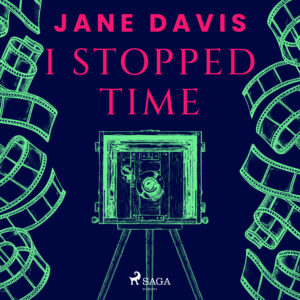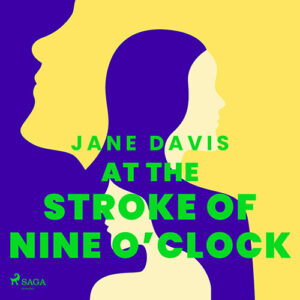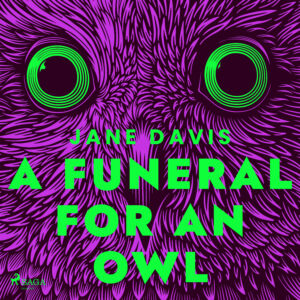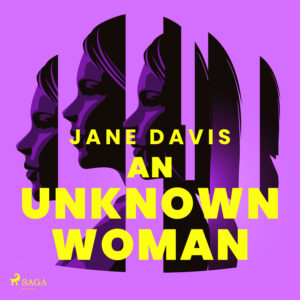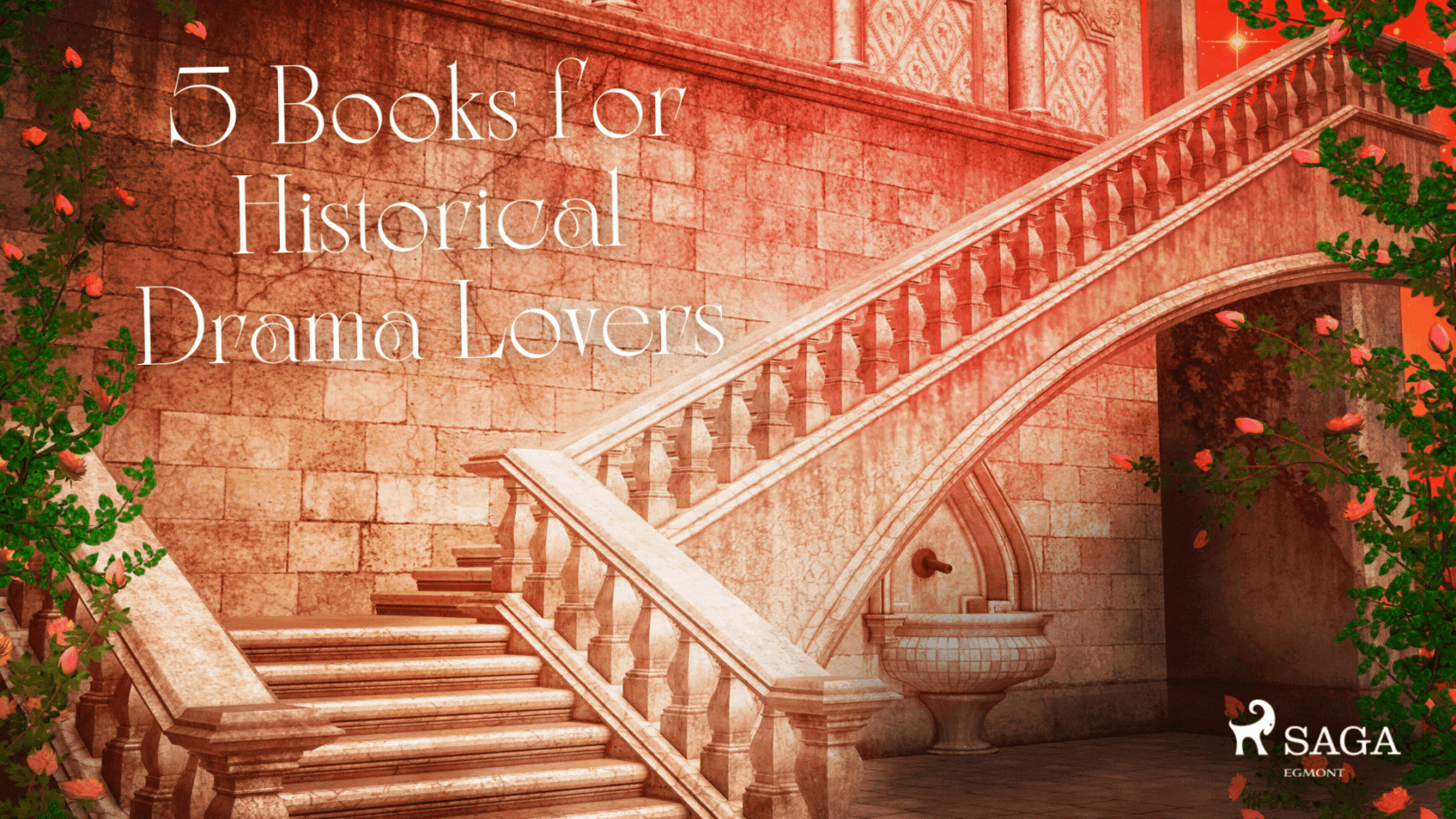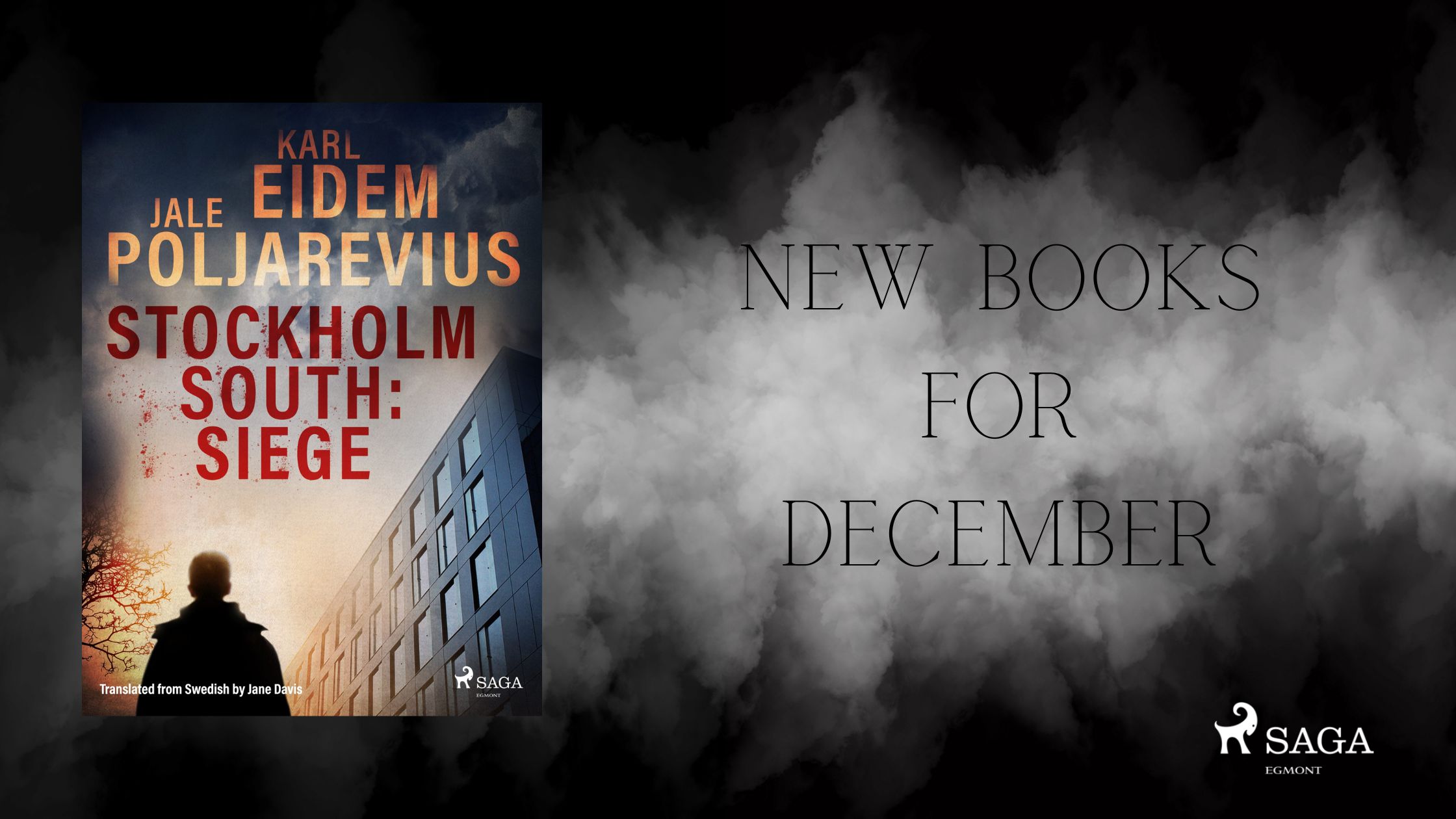Jane Davis, the ‘One to watch’.
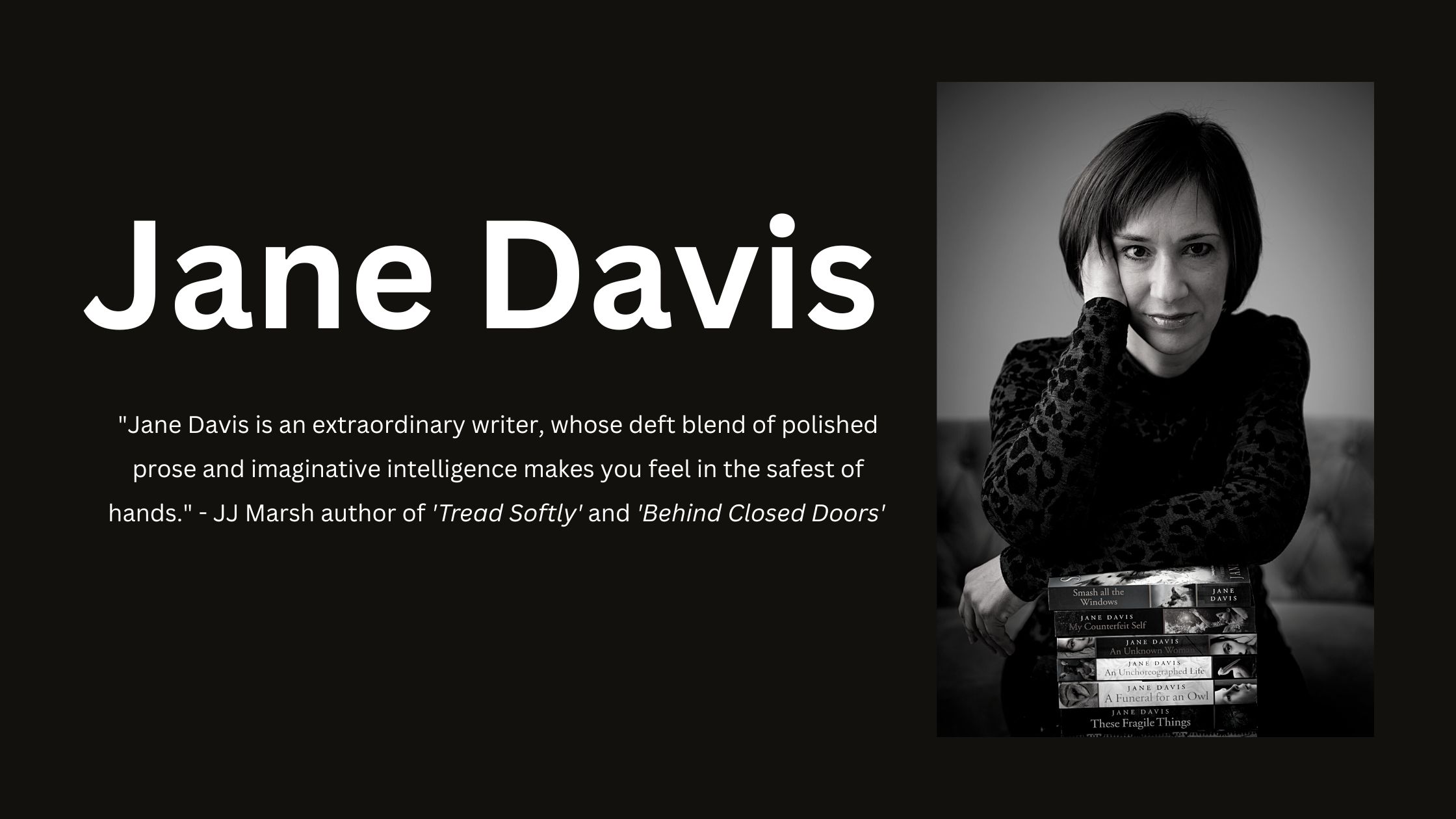
Jane Davis is a British prizewinning literary author, hailed by The Bookseller as the ‘One to Watch’. Her unique blend of fiction and non-fiction has garnered her a wide audience of readers, who rave about her storytelling abilities.
Jane Davis’ books cover a range of genres, from contemporary fiction to historical fiction, and are praised for their compelling characters and intricate plots.
She has a particular talent for making historical events and periods come alive, making her audiobooks a great choice for those who enjoy learning while they listen.
Many of her books have won awards and Saga Egmont has adapted several of these into audiobooks.
Her fans are always eager to see what she will come out with next and have praised her for her stories’ authenticity and emotional depth. With her growing body of work, Jane Davis is quickly establishing herself as a leading voice in the world of audiobooks.
We sat down with Jane to ask her a little about her books, her writing process and what it’s like hearing her books in audio.
In your opinion, what are the benefits of experiencing your stories through audiobooks as opposed to print?
Oral storytelling takes us back to a time before written language. Many myths and folktales came to us from this tradition, by the fireside or around a campfire. And of course, many of us have childhood memories, of parents reading bedtime stories, of sitting cross-legged on the floor for story-time in the classroom, and of radio and television shows we had in England like Listen with Mother or Jackanory. Perhaps it’s that association with childhood, but there’s something incredibly comforting about being read to. This was never truer than during lockdown when so many people found themselves alone and that sound of another person’s voice offered a lifeline. But it doesn’t have to be a choice between audiobooks and print. I learned that people who suffer from dementia (as my father did) have the best reading experience when listening to an audiobook at the same time as reading. It can be both.
What was it like listening to your books in audio form, and what did you enjoy most about the audio narrations?
I’m still listening to them. My first novel, “Half-truths and White Lies,” was produced as an audiobook and came in a neat pack of eight cassettes. The digital experience is much more convenient! For an author, who’s spent long hours conversing with their characters, familiar with the particular cadence of their voices, it’s strange at first to hear their words spoken in a voice that doesn’t match the one in your head, perhaps with a different slant and emphasis on different words. But I was delighted with the choice of narrators, the pairing of Philip Franks and Clare Corbett on “I Stopped Time” in particular. Philip reads the part of Sir James Hastings in the present day, but Clare has to age from a young girl to a one-hundred and eight-year-old woman, which is no mean feat. And I also owe Emily Pennant-Rea an apology. To have to find a voice for each of the ensemble of very different characters in “Smash all the Windows” was quite a challenge.
The audiobook book covers are quite different from your print covers, were you happy with the outcome?
I was! I like how the designer has taken elements from the original book covers, things my readers might recognise, but has created something completely different.
Can you tell us a bit about the inspiration behind your book “Small Eden”?
It was the house I called home for over twenty years. The previous owners left a reproduction of a woodcut hanging in the hall, which show Edwardian ladies playing a game of tennis, just in front of our cottage. Neighbours had told us that it was the gatehouse for an estate, but that didn’t ring true. With the help of a local historian, and with title deeds, ordnance survey maps, and census records, we were able to piece some of the story together. Our cottage was built by a man called Mr E Cooke as a ticket office for a pleasure garden. But why would a man have created a pleasure garden at a time when London’s great pleasure gardens had failed? I was intrigued. Instinct told me the reason had to be personal. Maps showed how an old chalk pit was landscaped with lakes and trees, and then, over time, the gardens were gradually divided up and were sold plot by plot to property developers. It was obvious just how reluctant Mr Cooke was to let go of his dream. The things that the documents didn’t tell us became my story. Unknowns provide a great opportunity for novelists!
What was the most challenging aspect of writing “Smash all the Windows”?
Smash all the Windows is a very different book, and probably my most contemporary novel. It’s about a fictional accident, and its aftermath. There are echoes of the Hillsborough disaster, of Grenfell, of Aberfan, by my disaster takes place on an escalator in the London Underground, the evening before the August Bank holiday. Thirteen years have passed since the disaster and – as is the case with real-life disasters – the families of the victims have had to fight for answers. There has been a tendency to call victims architects of their own fate. Sometimes, those in authority cover up some aspect of their findings that might suggest blame lies elsewhere. All too often, a single person is made a scapegoat. And sometimes there is simply a lack of understanding about how accidents happen. In the book, we see each of the victims through the eyes of their loved ones, and we see them leave their places of work and approach the scene of the accident. At some point, I knew I was going to actually have to write the accident itself. It had to be authentic, it had to be ugly, and it had to do justice to all of those other victims, and all of the families of victims who have had to find a way to carry on. In the end, I decided that it would be far more powerful to allow the readers to use their imagination.
Can you speak about the research process that went into “I Stopped Time”?
After my grandmother died at the age of almost one hundred, I set out to write a book that spanned her entire lifetime and the tremendous changes she’d witnessed. I’ve always been passionate about photography, and from developing my own prints, knew quite a lot about the technical aspects of it – although not necessarily its history. Of course, photography not only developed enormously during those one hundred years, but photography captured images of the period. But with such a long timeframe, I had to settle on which historical events to include which involved, mapping out a timeline, and then homing in on intricate details, which can make or break a novel. I spent a long time researching the world’s oldest people, and people who are struck by lightning, for example, and I spent many happy hours at Brooklands Museum researching transport and motor racing. I read as many biographies of the lives of photographers that I could lay my hands on. I had to superimpose what I knew about photography over the history, what it would have been like for someone to discover the medium when it was new. My favourite review was from a photographer, who wrote that the novel expressed everything she’d ever held inside her about her craft.
How do you approach creating characters for your books?
I have to know about their backgrounds, even if it doesn’t appear on the page. It is only then that I can understand how they see the world, their insecurities, and fears, what they keep hidden and what they allow others to see, what motivates them and spurs them on, and how they are likely to react in any given circumstance.
Have you always been interested in how people behave under pressure or did your interest build through your writing?
It’s certainly something I’ve had to think about more. ‘Conflict on every page’ is one of the cardinal rules of writing. To make that happen you have to put your characters in challenging situations. You’re looking for that thing that takes them outside their comfort zone, makes them act out of character, or perhaps even pushes them to the edge. My own interest is in cause and effect, usually in reverse – seeing the effect and then looking for its cause. It’s the age-old challenge of trying to make sense of the world.
Your audiobooks often delve into historical periods, how do you ensure accuracy while still maintaining a compelling narrative?
That’s a very interesting question, and one I constantly have to ask myself. It’s easy to become obsessed by the detail, particularly if you find it as fascinating as I do! I heard an interview with Hilary Mantel recently in which she said that once you’ve done your research you almost have to forget about it. I think that what she means is that you become your character. You see what they would have seen, hear what they would have heard, almost like method acting. My interest is the recent past and how it has influenced the present. At high school, the second world war felt like ancient history, but to my parents, it was living memory. They experienced it as children. It’s like me looking back at the millennium, which really doesn’t seem so very long ago.
Your books often tackle heavy themes such as loss and grief, how do you balance that with maintaining an engaging story?
Some of my favourite novels, certainly the most rewarding ones, tackle difficult subjects head-on. I don’t deliberately gravitate towards difficult subjects, but can’t shy away from loss and grief because they’re an essential part of life. It’s interesting when you spend as much time on book recommendation sites as I do just how many people want books that will leave them in pieces – they ask for advice about ‘Books that will ruin you’. In my own books, I always try to offer a glimmer of hope. Take “Smash all the Windows”. There is grief and loss, but it’s also about a fight for justice, and readers tell me that they found the book uplifting and cheered the families all the way to the final page.
Social Media Links
My website: https://jane-davis.co.uk
Facebook: https://www.facebook.com/JaneDavisAuthorPage/?fref=ts
Twitter: https://twitter.com/janedavisauthor
Goodreads: https://www.goodreads.com/author/show/6869939.Jane_Davis
See the full list of metadata for the books by Jane Davis by downloading below.
Sharing secrets makes two people closer, but hiding them, that’s a whole other story.
It’s 1884. Robert Cooke and his pregnant wife Freya tragically lose their two sons to scarlet fever. Freya immediately isolates herself for the safety of their unborn child.
Cut off from each other, there is no opportunity for husband and wife to share the burden of their loss. By the time they meet again, the subject is taboo and their unspoken grief becomes a dangerous enemy.
A decade later and now a successful businessman, Robert decides to create a pleasure garden in memory of his sons. But instead of sharing his vision with his wife, he widens the gulf between them by keeping her in the dark.
It is another woman who understands his heart: The eccentric and exceedingly talented artist Florence Hoddy, who lives alone with her unmarried brother.
It has taken conviction to right the wrongs. It will take courage to learn how to live again.
A coroner has ruled that the victims of the St Botolph and Old Billingsgate disaster are not to blame for their own deaths. For their families, the undoing of a miscarriage of justice should be a cause for rejoicing. For more than thirteen years, the search for truth has eaten up everything: marriages, families, health, careers and finances.
Finally, now that lies have been unraveled and hypocrisies exposed, they can all get back to their lives. Well, if only it were that simple.
What if the villain of your childhood turned out to be someone really rather extraordinary?
Disgraced politician Sir James Hastings is resigned to living out his retirement in a secluded village in the Surrey Hills. He is unmoved when he learns his mother has died at the age of 108. In his mind, he buried her when she abandoned him as a child.
Brought up by his father, a charismatic war-hero turned racing driver, the young James, torn between self-blame and longing, eventually dismissed her.
Now he inherits her life’s work – an incredible photography collection spanning six decades – and is forced to confront the realization that his version of the past isn’t even half the story.
London 1949. The lives of three very different women are about to collide.
Like most working-class daughters, Caroline Wilby is expected to help support her family. Alone in a strange city, she must grab any opportunity that comes her way. Even if that means putting herself in danger.
Star of the silver screen, Ursula Delancy, has just been abandoned by the man she left her husband for. Already hounded by the press, it won’t be long before she’s making headlines for all the wrong reasons.
Patrice Hawtree was once the most photographed debutante of her generation. Now childless and trapped in a loveless marriage, her plans to secure the future of her ancient family home are about to be jeopardised by her husband’s gambling addiction.
Each believes she has already lost in life, not knowing how far she still has to fall.
Six years later, one cause will reunite them: when a young woman commits a crime of passion and is condemned to hang, remaining silent isn’t an option.
A schoolyard stabbing sends wingbeats echoing from the past. One shocking event. Two teachers risk their careers to help a boy who has nothing. Three worlds intersect and collide.
The best way to avoid trouble, thinks Ayisha Emmanuelle, is to avoid confrontation. As an inner-city schoolteacher, she does a whole lot of avoidance.
14-year-old Shamayal Thomas trusts no one. Not the family, not the gang. And at school, trusting people is forbidden.
Jim Stevens teaches history. Haunted by his own, he still believes everyone can learn from the past. History doesn’t always have to repeat itself.
A powerful exploration of the ache of loss set in a landscape where broken people can heal each other.
Fire destroyed her present. Secrets destroyed her past. Look in the mirror and ask yourself a question. Who are you? Do you know the answer?
At the age of forty-six, Anita Hall knows exactly who she is. She has lived with partner Ed for fifteen years and is proud of the life they’ve built. They go out into the world separately: Ed with one eye on the future in the world of finance; Anita with one foot in the past, a curator at Hampton Court Palace. This is the life she has chosen – a dream job, equal partnership, living in a quirky old house she adores. She is happy. Their foundations are solid and their future seems secure. But that was before the fire.
Anita stands in the middle of the road watching her home and everything inside it burn to the ground. She and Ed have nothing more than the clothes on their backs. Fifteen years of memories gone up in smoke.
Before she can come to terms with the magnitude of her loss, hairline cracks begin to appear in her perfect relationship. And returning to her childhood home in search of comfort, she stumbles upon the secret her mother has kept hidden, a taboo so unspeakable it can only be written down.
The reflection in the mirror may look the same. But everything has changed. Anita thought she knew who she was. But not any more. And when your life goes up in smoke, you can never go home.
For more information about these titles, or our full English catalogue contact Nadia on – nadia.lamond@sagaegmont.com or simply book a meeting.




